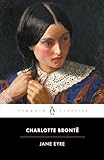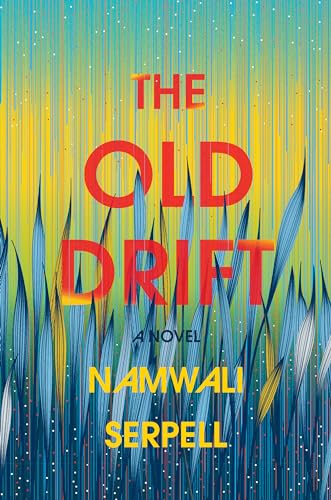Namwali Serpell’s debut novel, The Old Drift, is the extraordinary culmination of 19 years of work. During that period, excerpts from the book appeared in The New Yorker and Best American Short Stories and won the Caine Prize in 2015.
Spanning centuries, the novel begins at the “Old Drift,” a colonial settlement at the banks of the Zambezi River, near Victoria Falls in Zambia. Here, in 1904, a mistake, a seemingly minor act of violence between a British colonist and an Italian hotelier, sets off a tale that drifts through three generations of Zambian families. The book, in three parts—The Grandmothers, The Mothers, and The Children— centers around nine major characters, seven of whom are women. Most striking of these are the grandmothers, Sibilla, Agnes, and Martha.
An associate professor of English at UC Berkeley, Serpell and I chatted about her writing process and her new novel.
The Millions: What first struck me was the poetic quality of your sentences. Their playful musicality makes me want to ask about your interest in poetry and how it influences your work?
Namwali Serpell: Poetry is the one genre I don’t write! Or that I haven’t written in a long time, not since I was a maudlin teenager. I love poems, but they’re like magic to me—I’m awestruck and delighted and indelibly marked by the experience of reading them. And I have absolutely no idea how they work. I’m notoriously bad at teaching them for that reason. But I’m enamored—probably too enamored—of beauty, in every possible manifestation. I’ve been reading my work aloud to myself to edit lately and that has made me realize how important rhythm and musicality are to me, but I don’t think I have a working theory for why.
TM: The evident fun of your sentences also points to your enjoyment of writing and indicated you are a writer aware of the palliative role of humor in dark and heavy stories. How do you think about humor in writing?
NS: Again, I adore it, and think it’s a crucial element to nearly all my favorite books. But I’m not entirely sure how it works or how to make it work. The two risks with humor—the Scylla and Charybdis—on the page are that it’s either too heavy-handed or too subtle. I am still learning how to flex that muscle. I try to spend time with people with whom I can engage in a battle of wittiness to practice.
TM: I am often curious about the experience of the author as reader of her own work. What interests you as a reader of The Old Drift.
NS: Well, at the moment, I’m deeply frustrated with The Old Drift. I’m on tour and when I give readings, I find myself editing as I speak, mostly to clear out unnecessary words or repetitions. But to be a bit more generous to myself, I’m often interested in threads that connect the younger Namwali (who started this novel in the year 2000) to the Namwali I am now. I am both surprised and taken by how instinctively feminist I am as a writer.
TM: Among other themes, the novel also engages with the construction of identity on both the national and individual level. Can you talk about a bit about this?
NS: To me, identity is like language—it is a product of so many different origins that it’s pointless to try to pinpoint just one. Identity—at both individual and national levels—is fundamentally hybrid or syncretic, a mash-up of various elements. Once you have this picture of a kind of patchwork of experiences—forged by history, nature, culture—you then have to animate it, move it through time. So, identity can also change, radically, even drastically over time, in highly unpredictable ways. We house these moments and elements in one (ever-changing) body, but it is like the ship of Theseus, patched and re-patched so many times that its consistency as one vessel is always in doubt. This is why the oscillations of the highly contingent if not arbitrary borders around my country over the century are so fascinating to me. What do we lose when we discard the idea that identity is fixed and inherent and the idea that identity can be controlled or molded? And what do we gain? These are the questions that interest me.
TM: What would you say is your ars poetica as a writer?
NS: I don’t have one treatise I look to, but I find interviews and essays by Toni Morrison and Vladimir Nabokov most resonant. My own briefest mantra is “blind mouths,” a quotation from Milton’s Lycidas. It represents several different things for me—allusion, unself-conscious writing, the sublime, unexpected juxtaposition, the sensory basis of the word “aesthetics,” synesthesia, dream-like logic, and coincidence: my British grandfather once wrote an article trying to locate the source of the phrase and traced it back, via a sermon Milton might have heard, to an fantastical, apocryphal reference in an ancient travelogue to an African tribe without mouths.
TM: What were some of the surprises you encountered in the process of writing this book, either during research or in the writing itself?
NS: Learning about the Zambian Space Program was a big surprise—it so manifestly needed to be part of the story, but I didn’t know that until 2012 or so. And while I knew Matha Mwamba would cry for several decades, and I knew why she would stop, I didn’t realize that she would then go on to become a Gogo of the Revolution. When I read that part of the novel out loud to myself to revise it, I got chills! It was the first time I felt like a reader to my own work. Revising my very old drafts, I was surprised by certain impulses I had as a young person (in my early 20s). For instance, I was much wiser about relationships on the page than in my own life at the time.
TM: I think the novel wanted to keep going even after 560 pages. I too didn’t want it to end. Did the short attention span of our era cause any restraints for you in terms of book length?
 NS: I mean, if you try to think about attention spans in 21st-century readers too much, you’ll despair. My editors and I did try to cut the novel down by eliminating some digressive discourses on Zambian history. And I broke up the chapters into sections, dividing them with the graphic mosquito asterisk. That didn’t feel like a capitulation to contemporary reading practices, though, I tend to write in short scenes anyway. I cover over a century, so I did take liberties with time: I jump ahead, skid back, compress years in a paragraph, linger over a day in a chapter. I learned to be so cavalier with time from Charlotte Brontë’s Jane Eyre, but it also nicely maps onto the figure of the “drift” of the Zambezi river in my novel.
NS: I mean, if you try to think about attention spans in 21st-century readers too much, you’ll despair. My editors and I did try to cut the novel down by eliminating some digressive discourses on Zambian history. And I broke up the chapters into sections, dividing them with the graphic mosquito asterisk. That didn’t feel like a capitulation to contemporary reading practices, though, I tend to write in short scenes anyway. I cover over a century, so I did take liberties with time: I jump ahead, skid back, compress years in a paragraph, linger over a day in a chapter. I learned to be so cavalier with time from Charlotte Brontë’s Jane Eyre, but it also nicely maps onto the figure of the “drift” of the Zambezi river in my novel.
TM: The most gripping parts of the novel for me are the italicized sections narrated by the swarm of mosquitos. I find the swarm cheeky, funny, also scary. What inspired your use of these unnamed “we” narrators.
NS: I had written the opening to the novel in this grandiose voice, assuming it would belong to a human—the final descendent of the three families (with an ambiguous paternity). But I decided I didn’t want to conceive that character—in the future, without knowing which man was his father, and so on. And at some point, I realized that the mosquito swarm drew together a bunch of different elements already suspended in the mix of the narrative: entomology, etymology, microdrones, the idea of error (what are mosquitoes if not Nature’s great error?), the idea of blood, the particular relations between things that go under the names virality and parasitism, and so on. I landed upon this plural narrator as a kind of Greek chorus commenting on the action and explaining how it all fits together. I made that decision quite late in the process, but it was both the most challenging and the most fun to write those interstitial chapters.
TM: The swarm’s message to humans is to “obey the law of the flaw,” because “to err is human.” But they also warn that “error slips through your hands…” Flaw and human error seem to be a driving force in the lives of the book’s characters. Can you speak a bit on the novel’s interest in flaws?
NS: The etymology of error is a word meaning to stray or to wander, so the “old drift” of the title refers to that tendency—everywhere in nature—to veer from a straight path, be it in evolution, morality, politics, or emotional relationships. That notion of a slip or a skid is key to how I conceived the plot of the novel as well—as a series of collisions or accidents that seem somehow to have an unknowable law behind them. Humans like to treat error as something to fix (both to correct and to keep in place) or as something to flee (both to run away from and or pretend it doesn’t exist). The swarm suggests that the middle ground is the way—to allow oneself to drift and to pay attention to how error is itself a generative process. But to try to control error—to turn it into a principle or a method—tempts the swarm, tempts humans like Naila who tries to forge a political revolution out of it. And what results, of course, is beyond their prophetic powers.
TM: Africa is not a country, but there are certain shared experiences that make stories of Africa quite similar, especially to an African. There are many parts of the book that made me smile because it reminded me of Nigeria: “borrow me your polish,” Bata shoes, the misspellings of business signposts, Milo, low/load shedding, kawayawaya, and those toy cars we constructed out of scraps. The colonial experience of Zambia could also have been that of Ghana or Nigeria. What do you think of this overlapping tendency of the African story?
TM: I’m so glad there were so many resonant moments for you. I don’t believe in some essential African identity, built into the blood or skin. But as you say, shared experiences—cultural, geographic, and historical—can serve as the basis for Pan-African and diasporic conversations. Colonialism did some of that—we are speaking to each other in English, for example. But earlier migrations did some of that, too—our local languages share Bantu roots evident in words like “kawayawaya.” Climate did some of it—the sun that encourages kids to play outside. Class did some of it—the resourcefulness of taking the scraps around you to build toys or to build functional, if misspelled, business signage. Cultural artifacts also spread along networks of capital—Bata shoes, Dutch wax print, and so on. To me, this is inevitable and glorious, especially because it speaks to the amazing connections that can arise from highly contingent and unpredictable processes.









